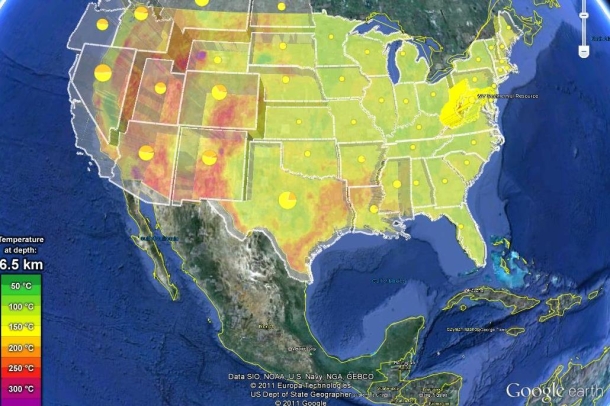
By sifting through oil and natural gas drilling data, a Google-funded study found that geothermal power in the U.S. could produce ten times the capacity of coal plants today.
The Geothermal Laboratory at Southern Methodist University yesterday revised estimates for the country’s potential to use underground heat to make electricity. Drawing on geological data from some 35,000 sites as deep as 31,000 feet, the study concludes that geothermal could supply a large portion of U.S. electricity needs in the future.
Most geothermal power plants are located in western states where underground temperatures are higher. But the SMU study found that new techniques make locations with temperatures as low as 100 degrees Celsius in much of the eastern U.S. viable. West Virginia, for example, has as much geothermal potential to match its mostly coal-based power supply.
“Our study assumes that we tap only a small fraction of the available stored heat in the Earth’s crust, and our capabilities to capture that heat are expected to grow substantially as we improve upon the energy conversion and exploitation factors through technological advances and improved techniques,” said SMU geophysics professor David Blackwell in a statement.
One emerging technique is enhanced geothermal where very deep wells are drilled and a liquid is injected down multiple wells to extract heat from rock. The hot liquid is then pumped up and converted into steam to make electricity in a turbine.
Google has invested in enhanced geothermal start-up AltaRock Energy and in Potter Drilling, which is developing hard rock drilling technologies.
One challenge with enhanced, or engineered, geothermal techniques is concern over safety. A test project in Switzerland was abandoned in 2009 because drilling caused tremors. AltaRock Energy had to abandon a California demonstration project over technical difficulties and is now working on another in Oregon.
In its study, SMU said that new techniques can make geothermal power work in areas with “little or no tectonic activity or volcanism.”
Source: cnet
 Follow
Follow